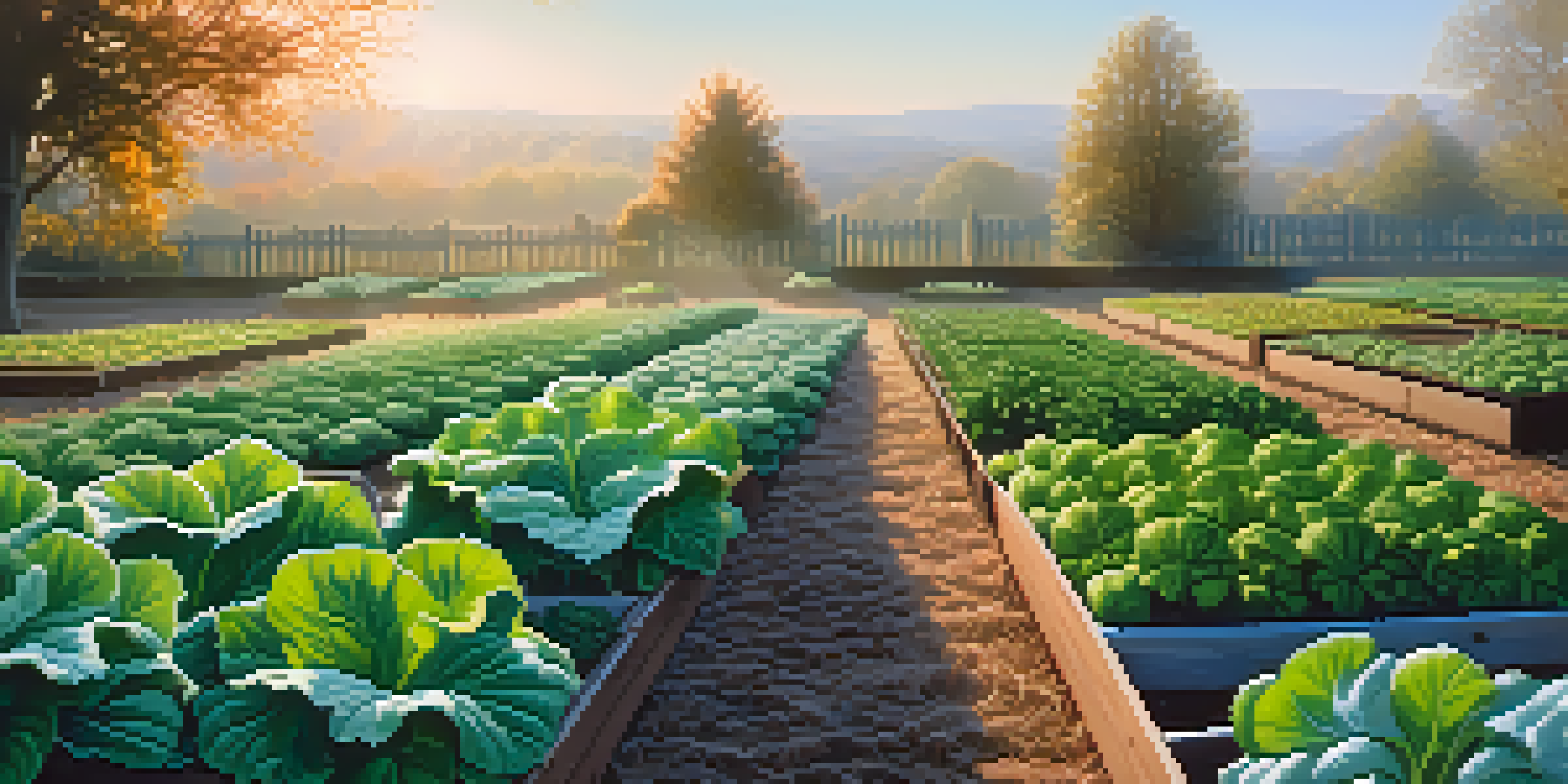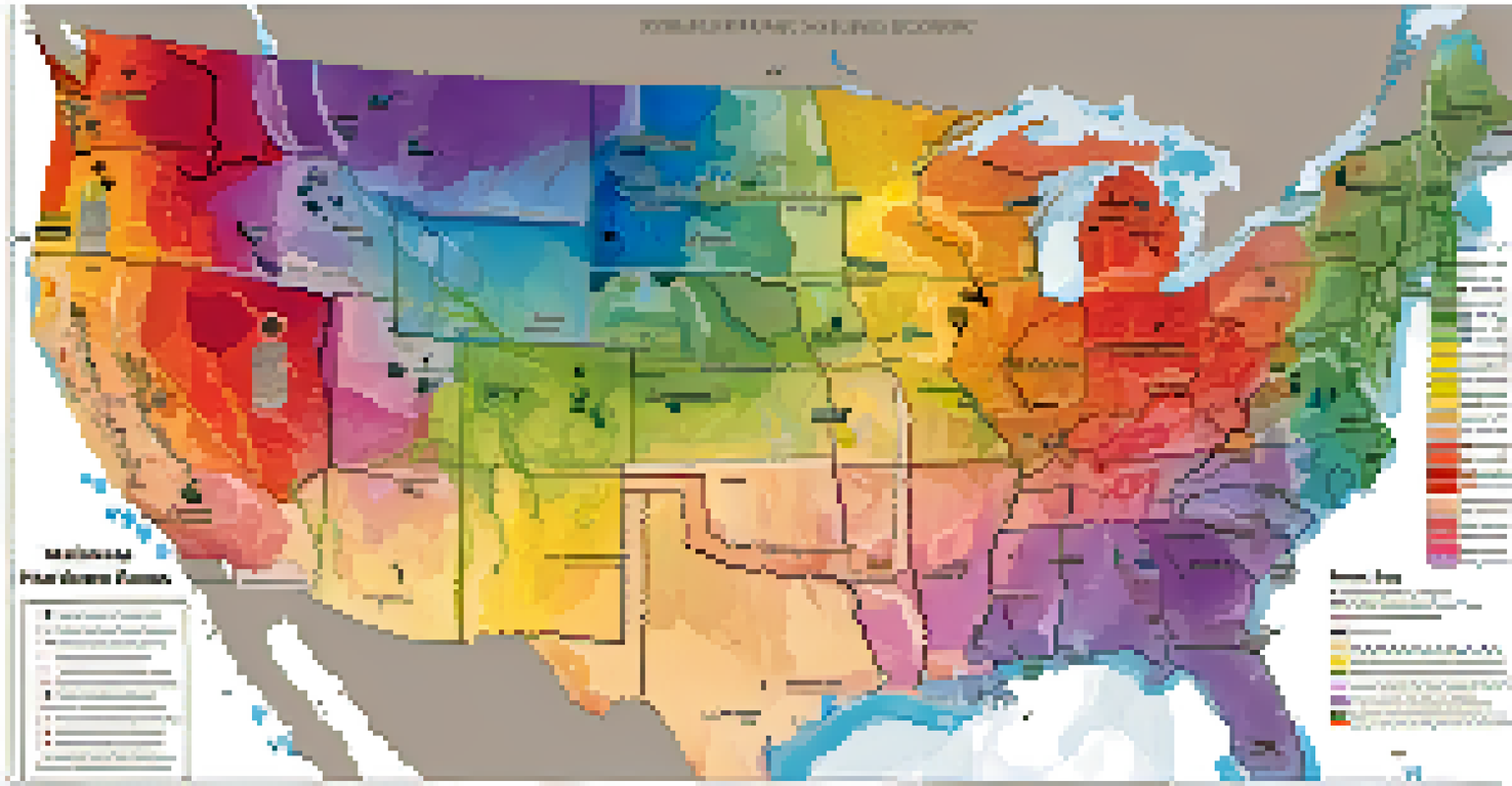Understanding Frost Dates for Cold Climate Gardening Success

What Are Frost Dates and Why Do They Matter?
Frost dates are key indicators for gardeners, marking when the last spring frost and first fall frost typically occur. Understanding these dates is crucial for planning your planting schedule, especially in cold climates where unexpected frosts can threaten your plants. By knowing when to expect these frosts, you can make informed decisions about when to plant seeds or transplant seedlings.
To plant a garden is to believe in tomorrow.
For instance, if your last frost date is May 15, you might want to wait until after this date to plant tender vegetables like tomatoes or peppers. Conversely, knowing the first frost date in the fall helps you plan your harvest and ensure that you gather your produce before the cold sets in. This knowledge equips you to protect your plants and optimize your growing season.
In summary, frost dates serve as a gardener's roadmap, guiding your planting and harvesting decisions. They are essential for ensuring a thriving garden and maximizing your yield, especially when growing in regions with harsh winters.
How to Determine Your Local Frost Dates
To effectively plan your garden, you first need to determine your local frost dates. This can be done by consulting gardening almanacs, local extension services, or online resources that provide frost date information based on your geographical location. Many gardening websites allow you to input your zip code to find tailored frost date information.

It's important to remember that frost dates can vary significantly even within small distances due to factors like elevation, proximity to bodies of water, and urban heat islands. Therefore, it's beneficial to connect with local gardeners who have experience with your specific climate, as they can share insights and anecdotal evidence about frost occurrences in your area.
Understand Frost Dates for Planting
Frost dates are crucial for planning your planting schedule, helping you avoid frost damage and optimize your growing season.
Once you have this information, you can create a personalized planting calendar. This proactive approach will help you avoid the disappointment of frost damage and ensure that your garden flourishes, even in a cold climate.
Understanding Hardiness Zones and Their Impact
Hardiness zones are classifications that indicate which plants are most likely to thrive in specific geographic areas based on climate conditions. The USDA Plant Hardiness Zone Map, for instance, divides the U.S. into 13 zones, each representing a range of average annual minimum winter temperatures. Knowing your hardiness zone can aid you in selecting plants that are well-suited for your local climate.
The best time to plant a tree was twenty years ago. The second best time is now.
If you live in a colder zone, it’s essential to choose varieties that can withstand the winter temperatures typical of your area. For instance, if you’re in zone 3, opting for cold-hardy vegetables and perennials will give you the best chance of success. Understanding both frost dates and hardiness zones can maximize your gardening efforts.
By aligning your plant choices with your hardiness zone and frost dates, you’ll create a more resilient and productive garden. This synergy between knowledge and practice helps ensure that your plants not only survive but thrive in your cold climate.
Tips for Protecting Plants from Frost
Even with careful planning, unexpected frosts can still occur. To protect your plants, consider using frost cloths, row covers, or blankets to shield them from cold temperatures. These protective layers trap heat and create a microclimate that can keep your plants safe during a sudden drop in temperature.
Another effective strategy is to plant in raised beds or containers, as they tend to warm up faster in the spring and cool down more slowly in the fall. This can give your plants a head start in the growing season and provide some insulation against early or late frosts. Additionally, grouping plants together can create a microclimate that helps retain warmth.
Choose Cold-Hardy Plants Wisely
Selecting frost-tolerant varieties is essential for success in cold climates, ensuring your garden thrives despite low temperatures.
Finally, be vigilant and keep an eye on weather forecasts during critical planting times. If frost is predicted, taking proactive measures can mean the difference between a flourishing garden and frostbitten plants.
Choosing the Right Plants for Cold Climates
Selecting the right plants is vital for successful gardening in cold climates. Look for varieties that are labeled as frost-tolerant or cold-hardy; these plants are specifically bred to withstand lower temperatures. Common options include kale, spinach, and certain root vegetables, which can thrive even when the temperature dips.
It's also helpful to consider the length of your growing season. Fast-maturing varieties can provide a harvest before the first frost, allowing you to maximize your yield. For example, radishes and lettuce can often be planted early in the season and harvested quickly, making them perfect for short growing periods.
By carefully choosing plants that are suited for your climate, you can cultivate a vibrant and productive garden. This thoughtful selection process not only enhances your gardening success but also brings joy as you watch your plants flourish despite the chilly environment.
Planning Your Garden Around Frost Dates
Effective garden planning goes hand-in-hand with understanding frost dates. Once you know your last and first frost dates, you can draft a planting schedule that maximizes your growing window. For instance, starting seeds indoors a few weeks before the last frost can give your plants a jumpstart, allowing for earlier harvesting.
Additionally, consider succession planting, where you stagger planting dates to ensure a continuous harvest throughout the growing season. This technique can be particularly useful for fast-growing crops like lettuce or radishes, ensuring that you always have fresh produce available.
Plan Your Garden Around Frost Dates
Creating a planting schedule based on frost dates allows for better organization and maximizes your growing window for a bountiful harvest.
By organizing your planting timeline around frost dates, you can create a well-structured garden that thrives. This proactive approach not only enhances your gardening experience but also increases the likelihood of a bountiful harvest.
Adjusting Your Gardening Practices for Cold Weather
Gardening in cold climates often requires adjustments to traditional gardening practices. For example, you might need to amend your soil with organic matter to improve drainage and warmth, which can promote healthier root growth. Utilizing mulch can also help retain soil moisture and moderate temperature fluctuations.
Consider using cold frames or greenhouses to extend your growing season further. These structures provide a controlled environment, allowing you to start plants earlier in the spring and continue growing later into the fall. They can be particularly beneficial for tender plants that require more warmth.

Adjusting your gardening strategies to accommodate cold weather not only protects your plants but also ensures a more productive and enjoyable gardening experience. Embracing these changes can lead to a flourishing garden, even in the chill of winter.